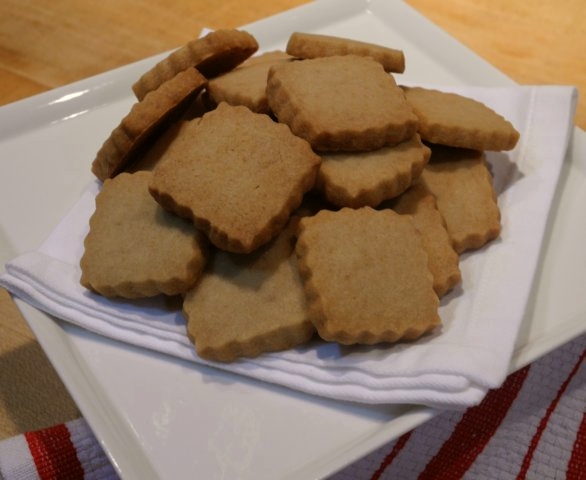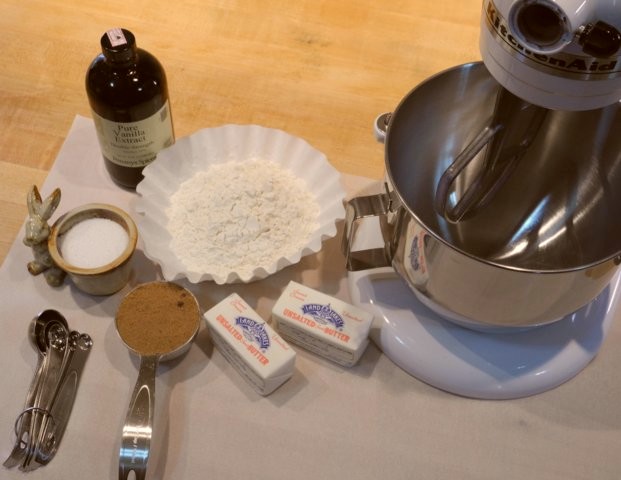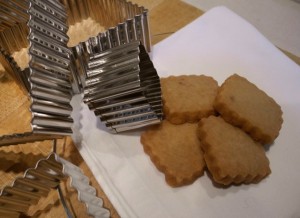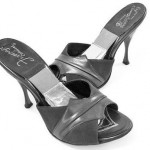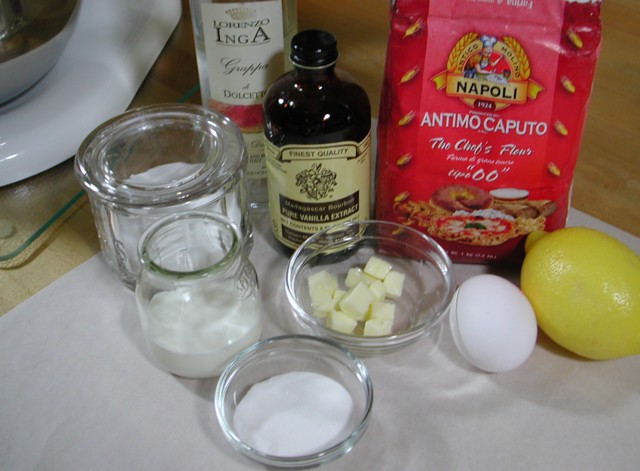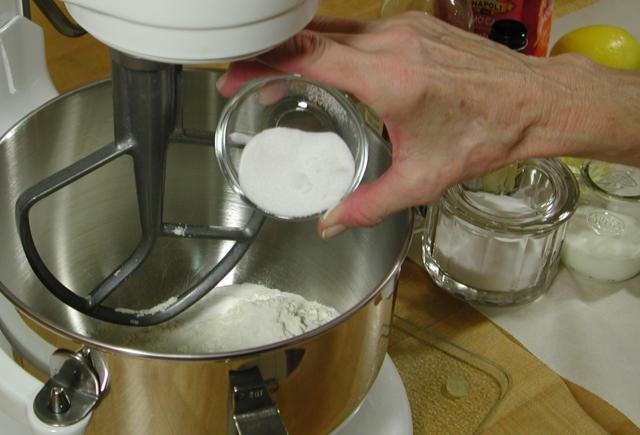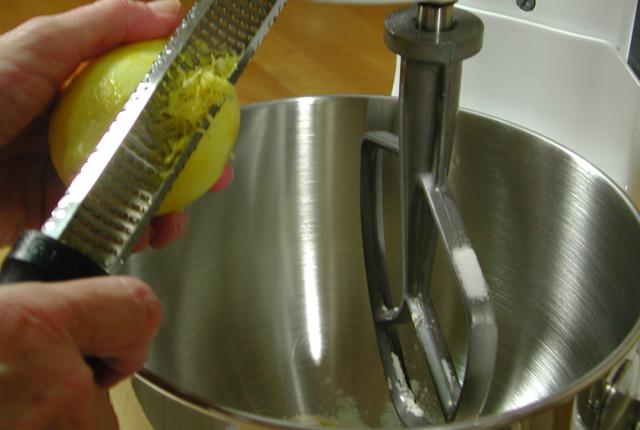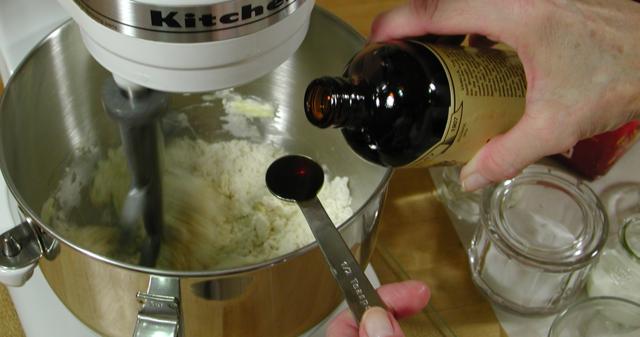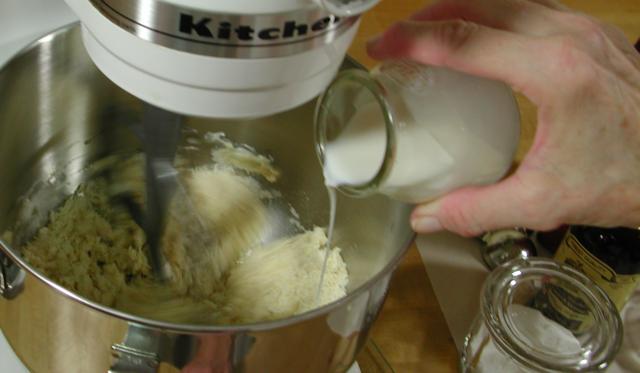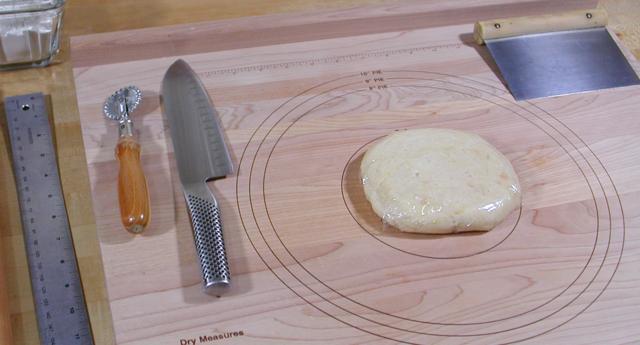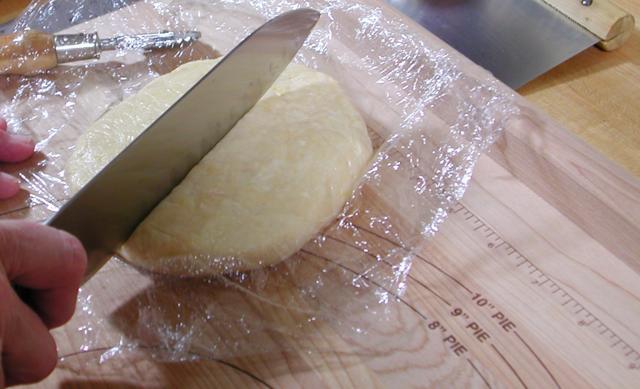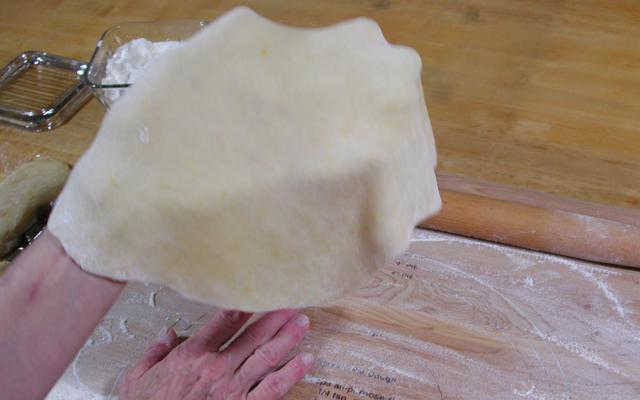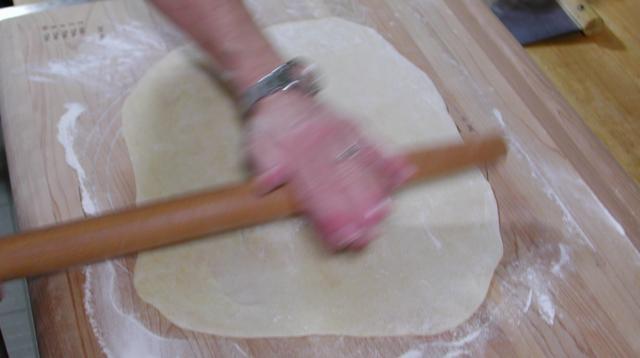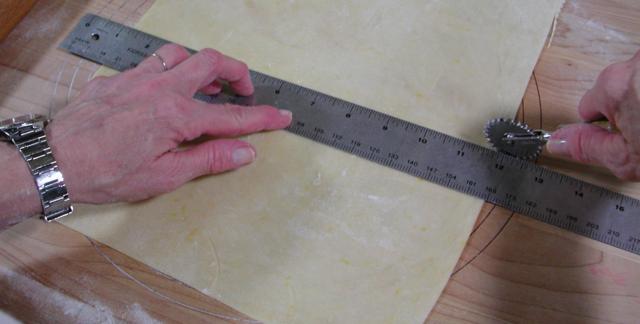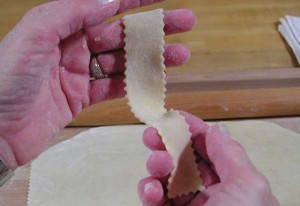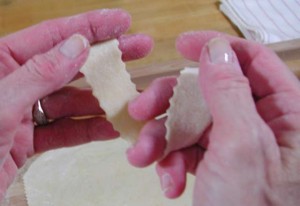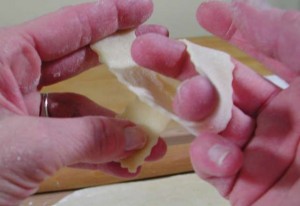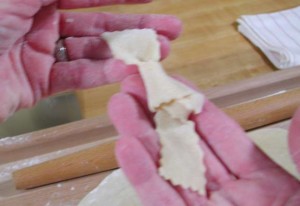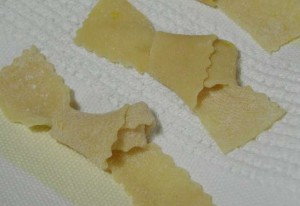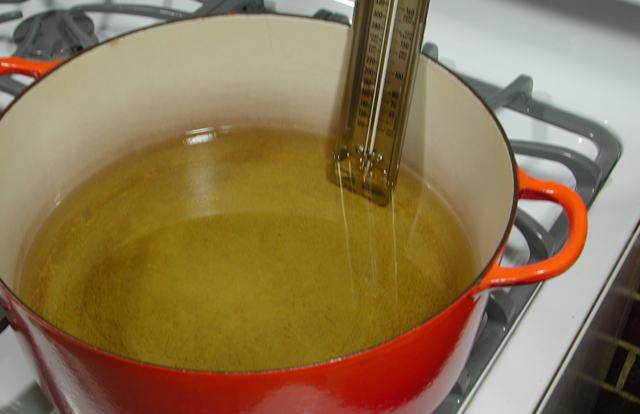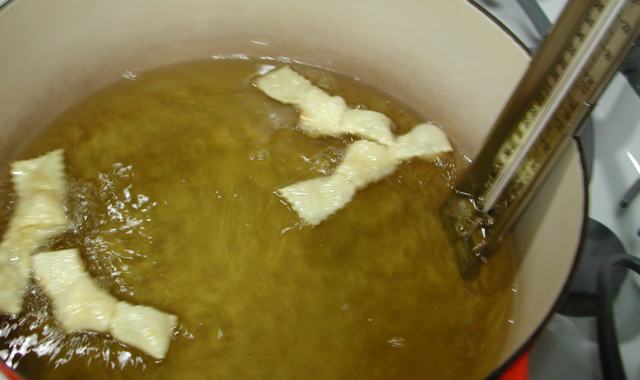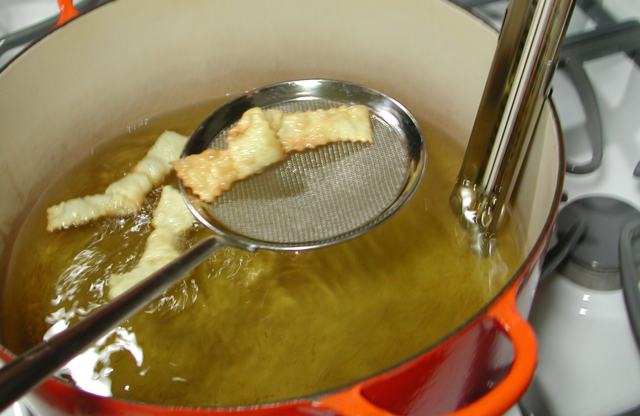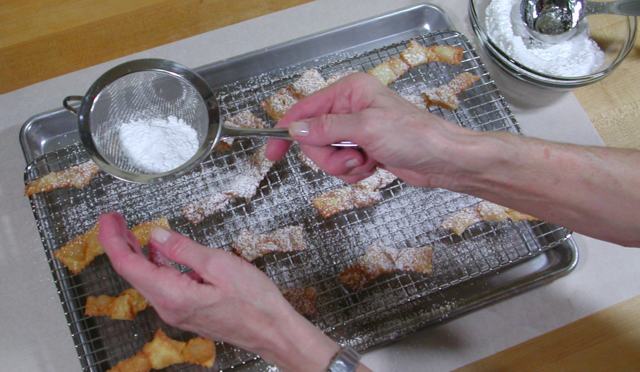Topic Index
The font size for a topic word is sized by the number of articles that reference that topic. The more articles the bigger the font.
Click on a word to search for posts with that topic. This page will reload with the search results.
When the Moon Hits Your Eye or Spaghetti in the Sky
Spaghetti al sugo di carne
We choose to go to the Moon in this decade and do the other things, not because they are easy, but because they are hard.
President John F. Kennedy, September 12, 1962
I often find myself wondering what my grandfather, Gaetano Crocetti, thought as he sailed to America in 1913. As he voyaged across the Atlantic Ocean from Naples to New York he must have looked up from the deck of the Hamburg and gazed at the Moon. I bet he never dreamed he would have two sons, and of those two Italian-Americans, one would help send men to the Moon and the other would become world famous singing about the Moon. Read the remainder of this entry »
Brown Sugar Shortbread
My sister Toni and I were out yesterday and we stopped in at the latest iteration of L.A.’s famous Sweet Lady Jane bakery. Three weeks into their tenure at 1631 Montana Avenue in Santa Monica, and the joint was jumpin’. People everywhere, buying, eating and enjoying. I was craving a treat, so I grabbed a piece of SLJ’s Brown Sugar Shortbread. It was divine, a tiny coin of a cookie, but packed with flavor. The problem with buying only one cookie, especially one as good as Sweet Lady Jane’s – one is never enough. Will I never learn? So this afternoon I got busy in my kitchen and made my own version. This cookie is buttery and tender, not too sweet, but definitely brown sugar, definitely molasses. And like all shortbread, it is both a keeper and a traveler. These cookies would be a welcome addition to any Holiday cookie tin or table. Buon Natale!
Brown Sugar Shortbread
makes 5 ½ dozen 1-inch squares
1 cup (2 sticks) unsalted butter, softened
½ cup dark brown sugar
2 cups all-purpose flour
½ teaspoon vanilla extract
½ teaspoon kosher salt
Preheat oven to 300 degrees.
Place butter in bowl of KitchenAid mixer fitted with paddle. Beat until creamy, 3 to 4 minutes.
Add brown sugar, vanilla extract and salt and combine well.
Add flour in 3 additions. Beat until just combined.
Turn dough out onto parchment. Form into block, wrap and place in refrigerator 30 minutes.
Cut dough in half, and working with one piece at a time, roll out to 1/4 inch thickness on a lightly floured board. Cut into 1-inch squares or other shape. Gather and reroll scraps. Place 1 inch apart on ungreased cookie sheets and bake on center rack 18 to 20 minutes or until lightly colored. Cool on racks.
A note to all cooks: if you want to make these cookies (which of course you will) but discover upon opening your pantry that you are out of brown sugar – do not despair! In your food processor combine 1 cup granulated sugar with 1/4 cup molasses and you’ve got brown sugar. Honest.
Note: You can click on any picture to see a slide show!
Crostoli
“Mamma, Che buona!” My father William Anthony Crocetti, born Guglielmo, did not speak English until he went to grade school. So I have no doubt that was what he exclaimed every time he ate the crostoli his mother made in her kitchen at 319 South Sixth Street in their south end neighborhood of Steubenville, Ohio. I wasn’t there, but those were his words. Senza dubito. And I bet Dino echoed his big brother.
Italians have been making these treats for hundreds of years. A recipe even appears in Pellegrino Artusi’s seminal cookbook, L’Arte di Mangiar Bene (The Art of Eating Well), first published in 1891. Although these delightful pastry knots are the prototypical Carnevale indulgence, they are also served at Christmas, New Year’s and Easter. This type of dolci is called nastri delle suore (nun’s ribbons), but that would never do for Italy, a country whose inhabitants identify themselves by regional ties first and as Italians second. Twenty regions – more than twenty names. These treats are called galani or frittelle alla Venezia in Venice and the Veneto, crostoli in Friuli, cenci (rags and tatters) or donzelli (young ladies) in Tuscany, frappe in Umbria, sfrappole or lattughe (lettuces) in Emilia-Romagna, chiacchiere (gossips) in Lombardy, chiacchiere di suore (nun’s gossips) in Parma, bugie (lies) in Piemonte and gigi in Sicily. Da vero. Call them what you will, they are fried dough, and I love fried dough. Like my father, I grew up eating these deep fried delights.
We called my grandmother Mom, and no typical nonna was she. When she arrived at our home I could always tell if she had a treat for us; instead of exiting her car and making her way directly up our driveway she went first to her passenger door, opened it and removed a long flat box. Then up our driveway she walked, box in hand, the clack-clack-clack of her Spring-o-lator shoes announcing her approach. We never knew what she had in that box, but we always knew it would be good. We four kids, my brothers Guy and Marc and my sister Toni and I, loved the cookies and we gobbled them up. My mother could always tell who had done most of the gobbling – the powdered sugar on the guilty party’s hands, face and chest was a dead giveaway. In fact that is how these cookies got their Piemontese name, bugie – liar’s cookies – as in “No Mamma. It wasn’t me, no mamma. I don’t know who ate the cookies…” Another of this cookie’s colorful names is chiacchiere or gossips. Some say the name came from the ladies of Lombard and the nuns of Parma who ate them as they gossiped. Still another source tells us the name originated with the sound the knots make when dropped in the cooking oil – “Pssst !” – just like the town gossip as she summons her listeners. Great stories all, which ever is true.
This cookie has a variation for every nonna. Some call for grappa, others get their alcohol kick from Gran Marnier, vin santo, white wine or rum while a few eschew spirits altogether. In Tuscany they are often made with olive oil in place of butter, and some regions use lard or shortening. Some use orange in place of lemon or no citrus at all. For the finishing touch, some cooks use confectioner’s sugar while others choose cinnamon sugar. As to the shape, some are plain ribbons, some are formed into pretzel-like shapes while others are twisted and pinched in the middle. You will also find flat squares or rectangles, some with one or two slits along the middle. This is the tradition of Italy’s beloved nonne at work, the tradition of variation on a theme that makes this cuisine so inviting, so forgiving, and so much fun.
Flour in Italy is classified by how finely it is milled, either 1, 0 or 00. Doppio zero is the most finely milled and feels like talcum powder. Do not confuse how finely ground the flour is with its protein content. Any strength flour can be ground into doppio zero. Just as we have pastry flour, all-purpose flour and bread flour with their varying protein contents, so do the Italians. They just have the added luxury of varying degrees of milling. To see the full range of flours available to the Italian cook go to the Molino Caputo website. I use a doppio zero flour that is comparable in protein content to our American all-purpose flour. Doppio zero flour is available at Italian markets and Amazon. com. If you can not find it, regular all-purpose flour will do nicely. Use the same amount the recipe calls for.
Mom made her dough by hand in the traditional manner – mounding her flour on a wooden board, making a “well” in the center, filling it with the ingredients and incorporating them with a fork. In a concession to the age of the mechanized kitchen I use my KitchenAid.
This dough is a dream to work with. Do not be intimidated by the idea of rolling it very thinly. You will be able to do so with great ease. Honest. On the subject of frying oil – Mom used solid Crisco, and there is no reason to change that. But if you have something else on hand, peanut oil, vegetable oil, feel free to make use of what is in your pantry. Mom drained the cookies on brown grocery bags. Some cooks use paper towels. I have found that placing the fried cookies directly on a cooling rack suspended over a sheet pan works very well.
A note about these cookies: they fry up very quickly, so be sure to have everything you need close at the ready. Banish the kids and pets from the kitchen. You will be working with a large volume of very hot oil.
And finally, do not overcook the crostoli. If you do you will not taste the grappa!
As the Italians say “Divertiti!” Have fun!
Form knots and place on a floured tea towel.
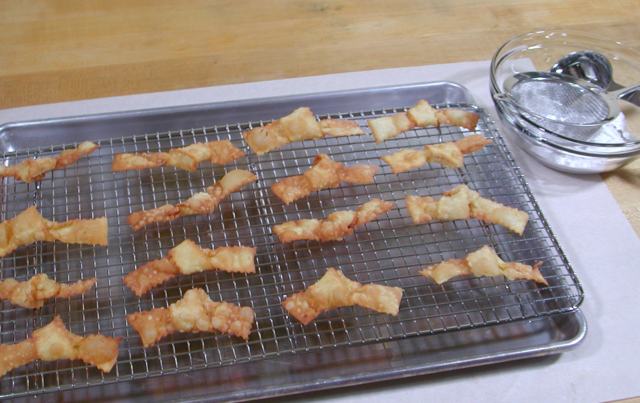
To keep things neat, place your tray and rack on a large piece of parchment. Have ready a bowl of confectioner's sugar and a small strainer.
Crostoli
makes about 3 ½ dozen
200 grams 00 flour (This should measure 1 ½ cups when lightly spooned into measuring cups, then leveled with a flat edge.)
1 tablespoon granulated sugar
zest of 1 lemon
generous pinch salt
1 large egg, lightly beaten
1 tablespoon unsalted butter, at room temperature
1 tablespoon grappa
1 teaspoon vanilla extract
3 to 4 tablespoons whole milk
shortening or oil for frying
confectioner’s sugar
In a mixer bowl fitted with paddle attachment, combine the flour, sugar, lemon zest and salt. With mixer running add egg, butter, grappa and vanilla. Gradually add 3 ½ tablespoons of milk to form a soft malleable dough. Remove dough from bowl, pat into a disk. Wrap in plastic, and set aside to rest for 1 hour.
Line a sheet pan or tray with a tea towel. Lightly dust the towel with flour. Set aside. Divide dough in 2 pieces, keeping the one you are not using wrapped in plastic or covered with a towel. On a lightly floured board, roll out dough as thinly as you can, about 1/16-inch thickness; dough should be almost translucent. Using a ravioli cutter cut dough to form ribbons 6 inches long and 1 inch wide. Tie a knot in the center of each ribbon, and place on the towel-lined pan in a single layer. Keep the knots covered as you work.
Meanwhile heat a generous amount of oil to 350 degrees in a heavy deep-sided pan. A candy thermometer placed on the side of your pan assures correct cooking temperature. Have ready a rack placed over a sheet pan. Fry the knots, a few at a time, until they color, about 20 to 30 seconds. Remove with a slotted spoon, spider or metal tongs, and place on rack to drain. Sprinkle liberally with confectioner’s sugar. Crostoli are best eaten the day they are made.
Note: You can click on any picture to see a slide show!


